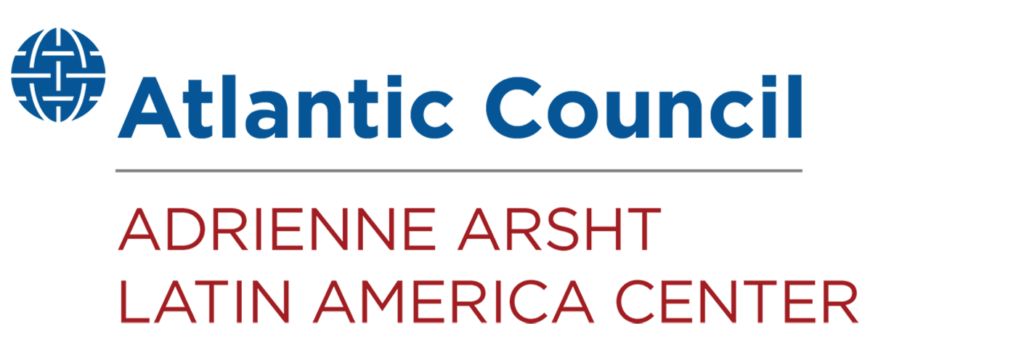The economic impact of a more efficient US-Mexico border: How reducing wait times at land ports of entry would promote commerce, resilience, and job creation
The first of a two-part series on the US-Mexico border
A joint report by the Atlantic Council’s Adrienne Arsht Latin America Center, the University of Texas at El Paso’s Hunt Institute for Global Competitiveness, and El Colegio de la Frontera Norte.

Executive summary
Improvements in border management and the adoption of new technologies at the US-Mexico border have the potential to enhance security and generate economic benefits for the United States and Mexico through expedited flows of goods and people. Reduced border wait times would lead to more traffic entering the United States from Mexico, both in terms of commercial trucks loaded with goods for US consumers and shoppers ready to buy US goods. This report quantifies the economic impact of this additional commerce and cross-border spending, which would lead to further economic prosperity in the two countries.
We know that long wait times at the border can hurt our businesses and economy, especially in my district. Ensuring our ports of entry have sufficient funding to reduce wait times is necessary to keep our economy on track and ensure businesses on both sides of the border succeed.”
The Hon. Juan Vargas
Representative (D-CA-51)
US House of Representatives
Research shows that a 10-minute reduction in wait times could lead to an additional $26 million worth of cargo entering the United States each month via commercial vehicles. This translates to more than $312 million in further commerce from Mexico into the United States annually. The extra inventory of finished and intermediate goods would drive down US domestic prices, creating increased economic well-being for US citizens.
This report also finds that reducing border wait times by 10 minutes has a positive annual impact of $5.4 million on the US economy due to purchases by additional families and individuals entering the United States from Mexico. While the immediate effect of these purchases is most evident in border communities, economic benefits would spread to the continental United States due to the economic linkages between local economies, with approximately 25 percent of the total impact reaching non-border states.
Strengthened US-Mexico collaboration at our border will unlock significant economic growth, promote supply chain resilience, and boost competitiveness, benefiting Mexican workers and families. These benefits will reverberate far beyond the border, reaching states throughout Mexico. Now is the time to invest in initiatives to create an even more efficient and secure shared border.”
H.E. Luz Maria de la Mora
Subsecretary of International Commerce, Secretariat of the Economy
United Mexican States
Beyond the $312 million in added commerce from Mexico into the United States, a 10-minute reduction in border wait times would promote the creation of nearly 18,700 direct and indirect jobs in Mexico, increase labor income per sector by an average of $17,474, and boost growth for various Mexican economic sectors, particularly manufacturing, wholesale trade, and mining.
More specifically, a one-minute reduction in border wait times would increase the average production (or output) per sector—for Mexico’s top ten sectors exporting to the United States—by 2 percent, adding an average of $41.5 million per sector to the Mexican economy. This reduction in border wait times would also lead to an average sectoral growth in intermediate sales and final demand of 2.4 percent and 1.7 percent, respectively.
Our border communities rely on efficient and effective infrastructure for work, trade, tourism and other economic exchanges across the US-Mexico border. As the North American region seeks to retain its competitive global advantage, it is more important than ever for these communities to have access to top-notch ports of entry, staffing and technology. With the proper tools for border management, our border cities will be enabled to prosper now and well into the future.”
The Hon. Tony Gonzales
Representative (R-TX-23)
US House of Representatives
These findings illustrate the economic benefits of prioritizing investments at the US-Mexico border to reduce commercial and noncommercial wait times. They are understood as the lower range of the potential national-level economic benefits of deepened US-Mexico collaboration to create a more efficient and secure border. A forthcoming second study will build on these findings, disaggregating the economic impact of reduced wait times for US and Mexican states and counties at the border and beyond.
Made possible by


The Adrienne Arsht Latin America Center broadens understanding of regional transformations and delivers constructive, results-oriented solutions to inform how the public and private sectors can advance hemispheric prosperity.
Image: Trucks pass through the U.S. border and into the United States from Juarez, Mexico in El Paso, Texas, U.S. June 18, 2018. REUTERS/Mike Blake